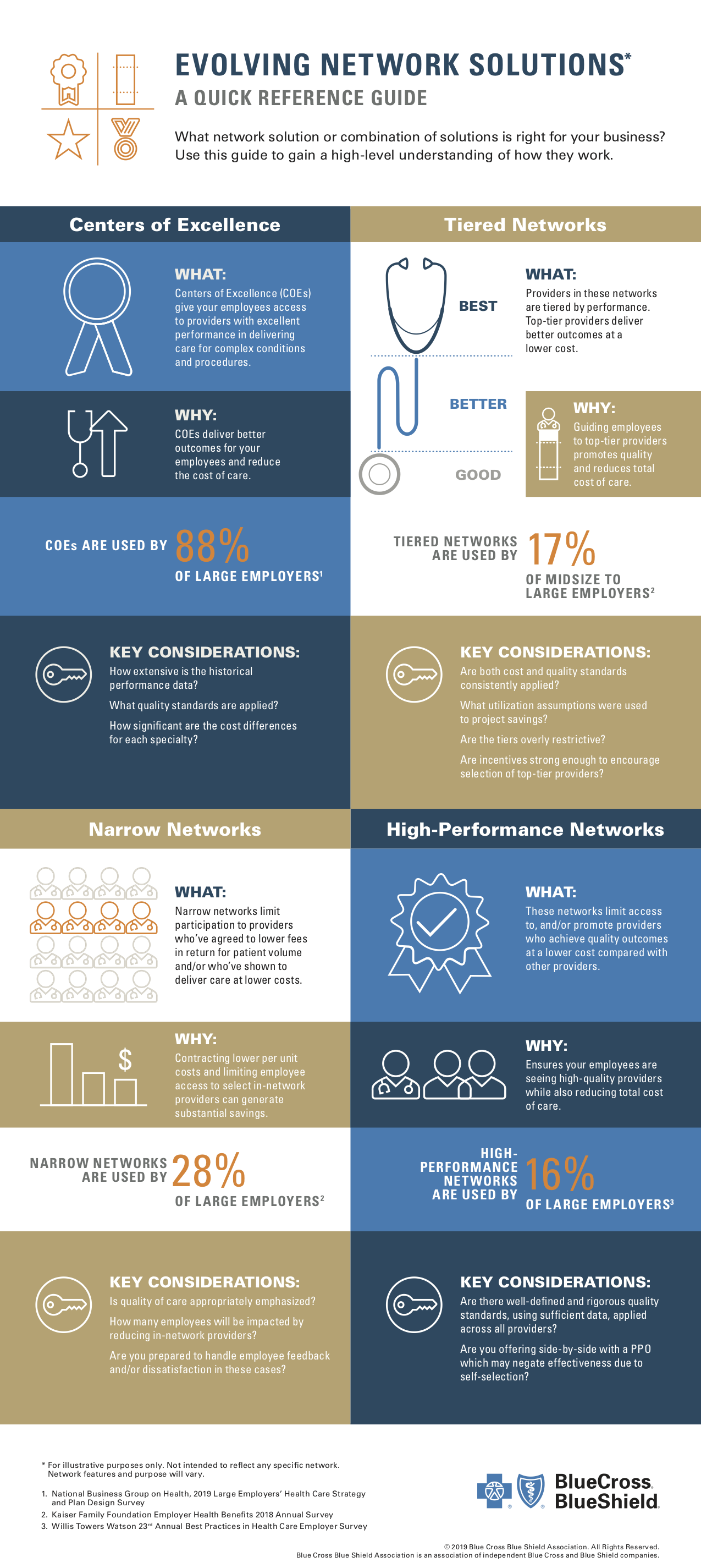Evolving Network Solutions
What network solution or combination of solutions is right for your business? Use this guide to gain a high-level understanding of how they work.

What network solution or combination of solutions is right for your business? Use this guide to gain a high-level understanding of how they work.
Centers of Excellence
Centers of Excellence (COEs) give your employees access to providers with excellent performance in delivering care for complex conditions and procedures. COEs deliver better outcomes for your employees and reduce the cost of care. COEs are used by 88 percent of large employers. Key considerations: How extensive is the historical performance data? What quality standards are applied? How significant are the cost differences for each specialty?
Tiered Networks
Providers in these networks are tiered by performance. Top-tier providers deliver better outcomes at a lower cost. Guiding employees to top-tier providers promotes quality and reduces total cost of care. Tiered networks are used by 17 percent of midsize to large employers. Key considerations: Are both cost and quality standards consistently applied? What utilization assumptions were used to project savings? Are the tiers overly restrictive? Are incentives strong enough to encourage selection of top-tier providers?
Narrow Networks
Narrow networks limit participation to providers who have agreed to lower fees in return for patient volume and or who have shown they can deliver care at lower costs. Contracting lower per-unit costs and limiting employee access to select in-network providers can generate substantial savings. Narrow networks are used by 28 percent of large employers. Key considerations: Is quality of care appropriately emphasized? How many employees will be impacted by reducing in-network providers? Are you prepared to handle employee feedback and or dissatisfaction in these cases?
High-performance Networks
These networks limit access to and or promote providers who achieve quality outcomes at a lower cost compared with other providers. These networks ensure your employees are seeing high-quality providers while also reducing total cost of care. High-performance networks are used by 16 percent of large employers. Key considerations: Are there well-defined and rigorous quality standards, using sufficient data, applied across all providers? Are you offering side-by-side with a PPO, which may negate any effectiveness due to self-selection?
